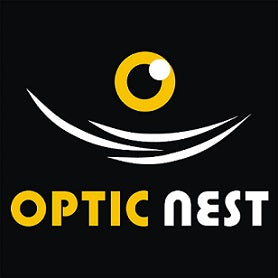"Optimal Clarity: The Significance of Vertex Distance in Eyeglass Fitting"
Understanding Vertex Distance: Its Importance in Optometry and Eyewear Fitting
The concept of vertex distance is pivotal in the field of optometry and eyewear fitting, influencing both the comfort and effectiveness of eyeglasses. Vertex distance, essentially, is the space between the back surface of an eyeglass lens and the front of the cornea. This essay delves into the significance of this measurement, its impact on vision correction, and considerations during eyeglass fitting.
The Role of Vertex Distance
Vertex distance plays a crucial role in the accuracy of vision correction provided by eyeglasses. It is particularly significant when prescribing strong prescriptions, both for nearsightedness (myopia) and farsightedness (hyperopia). For example, in high-powered lenses, a small change in the vertex distance can significantly alter the effective power of the lenses as perceived by the wearer. This is because the farther the lens is from the eye, the lesser its effective power becomes. Therefore, precise measurement and adjustment of this distance are essential to ensure that the corrective lenses perform as intended.
Measurement and Standards
Typically, the vertex distance is measured during an eye examination using a device called a distometer or can be estimated during the eyewear fitting process. The standard vertex distance is usually set between 12mm and 14mm. This range is considered optimal for most individuals, balancing between too close, which can cause discomfort or eyelash contact, and too far, which can reduce the effectiveness of the lens prescription.

Impact on Lens Design
The importance of vertex distance extends into the realm of lens design and manufacturing. For those with significant refractive errors, optometrists might adjust the prescription based on the expected vertex distance of the eyewear. This process, known as vertex correction, ensures that once the glasses are worn, the lenses will provide the correct level of vision correction. In addition to corrective adjustments, understanding and controlling the vertex distance is also crucial for the design of progressive lenses and high-index materials, where precision is key to functionality and wearer satisfaction.
Practical Considerations and Challenges
In practice, maintaining an ideal vertex distance poses several challenges. Eyeglass frames vary widely, and each design influences how lenses are positioned relative to the eyes. Factors such as the frame's tilt (pantoscopic tilt) and the wrap of the frame can alter the effective vertex distance. Adjusting these parameters requires careful consideration by the eyewear professional to ensure that the glasses not only fit comfortably but also provide accurate vision correction.
Conclusion
In conclusion, the vertex distance is a critical aspect of both lens prescription and frame selection. Its correct measurement and adjustment are vital for the proper functioning of eyeglasses, particularly in high prescription lenses. By understanding and meticulously adjusting the vertex distance, optometrists and eyewear professionals can significantly enhance the visual clarity and comfort for eyeglass wearers. As advances in eyewear technology continue, the precision in measuring and adjusting vertex distance will remain a cornerstone of effective vision correction.
